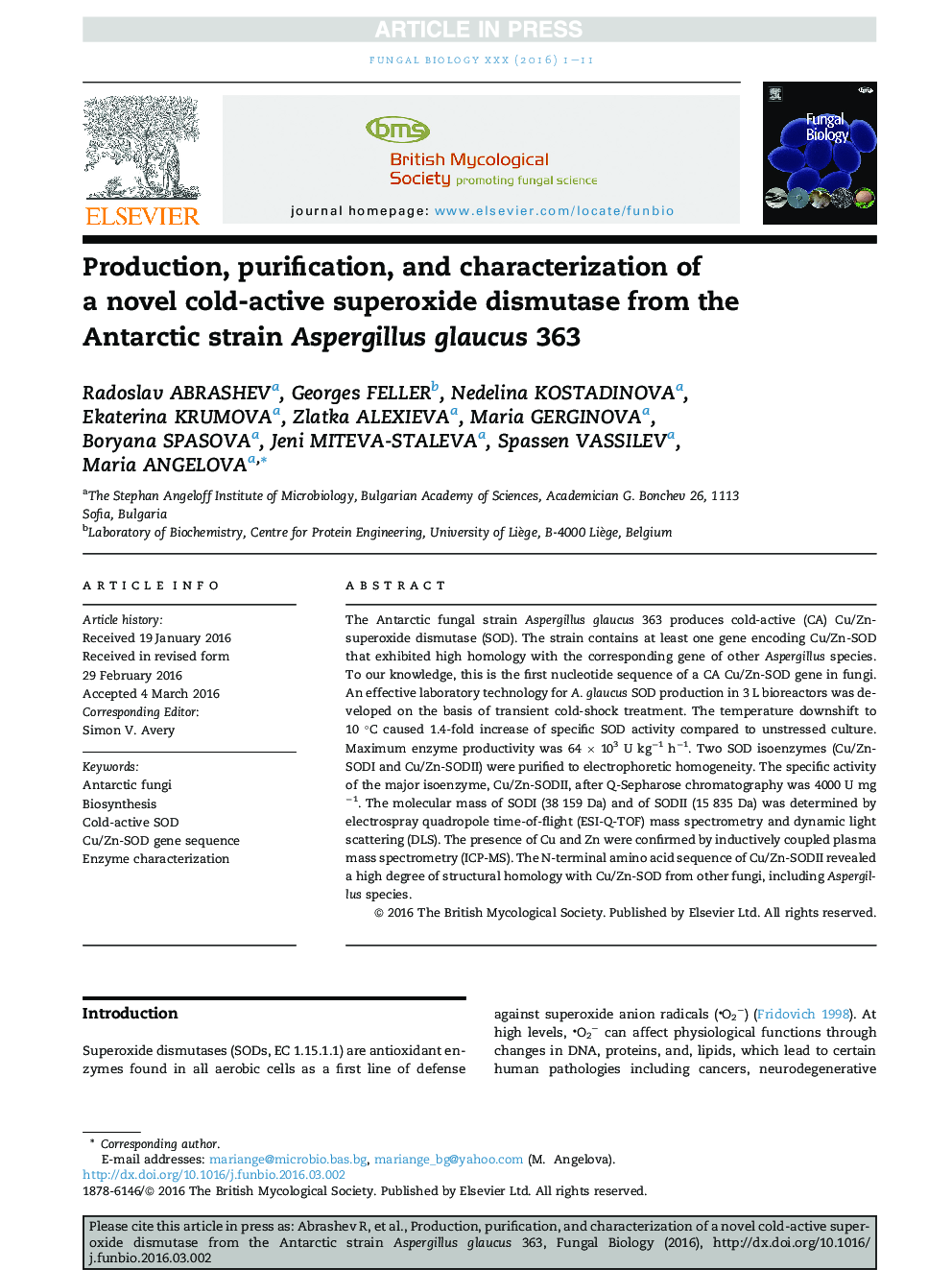| Article ID | Journal | Published Year | Pages | File Type |
|---|---|---|---|---|
| 6287818 | Fungal Biology | 2016 | 11 Pages |
Abstract
The Antarctic fungal strain Aspergillus glaucus 363 produces cold-active (CA) Cu/Zn-superoxide dismutase (SOD). The strain contains at least one gene encoding Cu/Zn-SOD that exhibited high homology with the corresponding gene of other Aspergillus species. To our knowledge, this is the first nucleotide sequence of a CA Cu/Zn-SOD gene in fungi. An effective laboratory technology for A. glaucus SOD production in 3 L bioreactors was developed on the basis of transient cold-shock treatment. The temperature downshift to 10 °C caused 1.4-fold increase of specific SOD activity compared to unstressed culture. Maximum enzyme productivity was 64 Ã 103 U kgâ1 hâ1. Two SOD isoenzymes (Cu/Zn-SODI and Cu/Zn-SODII) were purified to electrophoretic homogeneity. The specific activity of the major isoenzyme, Cu/Zn-SODII, after Q-Sepharose chromatography was 4000 U mgâ1. The molecular mass of SODI (38 159 Da) and of SODII (15 835 Da) was determined by electrospray quadropole time-of-flight (ESI-Q-TOF) mass spectrometry and dynamic light scattering (DLS). The presence of Cu and Zn were confirmed by inductively coupled plasma mass spectrometry (ICP-MS). The N-terminal amino acid sequence of Cu/Zn-SODII revealed a high degree of structural homology with Cu/Zn-SOD from other fungi, including Aspergillus species.
Keywords
Related Topics
Life Sciences
Agricultural and Biological Sciences
Agricultural and Biological Sciences (General)
Authors
Radoslav Abrashev, Georges Feller, Nedelina Kostadinova, Ekaterina Krumova, Zlatka Alexieva, Maria Gerginova, Boryana Spasova, Jeni Miteva-Staleva, Spassen Vassilev, Maria Angelova,
